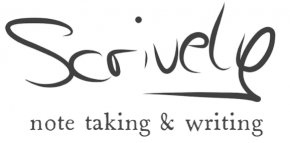Kaweco “Sunrise Orange”: a vibrant color with popping shading
Ink name: Kaweco “Sunrise Orange”
Unit capacity: 30 ml (glas bottle)
Price: 10 €
Price per ml: ca. 0,33 €
| Leuchtturm 1917 | Spiral-bound Notepad | |
| Color | Orange, reddish-brown where ink pools | Orange, red-brown hues |
| Saturation | Moderate | Moderate |
| Shading | Very much of it – almost turbulent | Very pronounced – a little uneasy |
| Feathering | None | None |
| Bleed-through | None – but on the edge on the 2nd pass | On the 2nd pass |
| Wetness | Rather wet ink | Rather wet ink |
| Drying time | 15 sec. | 15 sec. |
| Smudging when dry | No | No |
| Regular smear test | OK | OK |
| Left-page smear test | OK | – |
Handwritten review on Leuchtturm 1917 paper
(scanned @600 dpi with Doxie Flip – click image to enlarge on Flickr)
Handwritten review on a Standard Spiral-Bound Notepad
(scanned @600 dpi with Doxie Flip – click image to enlarge on Flickr)
Kaweco has recently released two new ink colors to add to the lineup of the already existing eight colors. The two new colors are “Sunrise Orange” and “Smokey Grey”. Since I have already reviewed “Smokey Grey“, this review here will be about “Sunrise Orange”.
“Sunrise Orange” really lives up to its name. It actually really reminds me of a summer sunrise! Or an autumn sunset? Hmm. Anyway, it is certainly a lovely orange that exposes some slightly reddish-brown hues where the ink pool or at a second pass. The color does look awesome on most papers, however it really does pop and shine a lot more on better paper such as the Leuchtturm. It’s just a lot more glossy there, whereas it is rather matte on more absorbent (but still ink friendly) paper.
The main feature of the ink may be its wetness. It really is a rather wet ink – even in a TWSBI fountain pen, whose nibs are normally not especially know for being gushers. This wetness then extends into all kinds of properties of the ink. First of all, the wetness contributes to the ink having an excellent flow and lubrication. I find the nib to be gliding across the paper in a very pleasant manner. Secondly, it does of course contribute to an amazing shading that runs from lighter orange notes into the said darker orange-reddishbrown tones. Shading in itself is a characteristic that is sought after by many fountain pen users, while others find it disturbing. Something to note with “Sunrise Orange” is, in my personal opinion, that it has rather strong shading. It is already a vibrant color and does, on top of that, shade across quite a spectrum – I personally do almost find that shading too much. Especially with longer texts, I find it a little turbulent and almost uneasy on the eye. So if you are a fan of shading, this ink might be exactly you. If you dislike shading, think twice about this orange here.
On the flip side, the wetness does also contribute to the ink having a rather long drying time – for an orange an even unusual long drying time. No matter if Leuchtturm-paper or a regular notepad that is a little more absorbent, you gotta wait for a good 15 seconds to be safe with turning the page. Other orange inks (e.g. Edelstein Mandarin or Diamine Pumpkin) dry in about a third of that time. The wetness then also lets the ink bleed on a 2nd pass on regular paper. In ‘normal’ writing use, there should be no issue with bleeding, however.
Here is a video of an ink swab of “Sunrise Orange” that I have made and that should really give you an idea about the inks wetness:
Pricewise, I do find the Kaweco ink fairly expensive. With around 0,30€/ml it is in direct competition with luxury inks such as the Graf von Faber-Castell inks, Pelikans Edelstein Ink-series or the Pilot Iroshizuku inks. A Diamine ink, for instance, costs about a third of that (roughly 0,11€/ml). While the Kaweco ink is certainly a great ink, no doubt here, I think it would be of great help to for example also make the packaging match its price. While the luxury inks mentioned above all come in very elaborate design glas flacons, the Kaweco ink comes in a simple bottle that you for example also find with the Pelikan 4001 inks – the latter also costing less than half of the Kaweco ink. I would probably either lower the price of the ink or increase the whole appearance. Still, the ink itself is really good – no complaints here.
As for its ‘leftyness’, “Sunrise Orange” gets a pass, but certainly lives on the edge here. Being a pretty wet ink, it does take quite some time to dry. Expect this time to increase, if you use a wetter or broader nib (remember I used a Fine nib and medium/slightly drier pen here). Apart from that, there won’t be any issues with smearing or smudging once the ink as dried. This is a huge lefty-advantage and saved the ink a space in the “lefty-approved” hall of fame.
I hope this ink review was helpful – feel free to check out my other ink reviews as well.
If you would like to compare this color to any other ink color/brand, I would suggest to head over to GouletPen’s “Interactive SwabShop” – a tool that lets you compare over 500 different inks, while the swabs are done under similar conditions. This is a wonderful tool for “cross-color-brand-comparison” that I can highly recommend.





